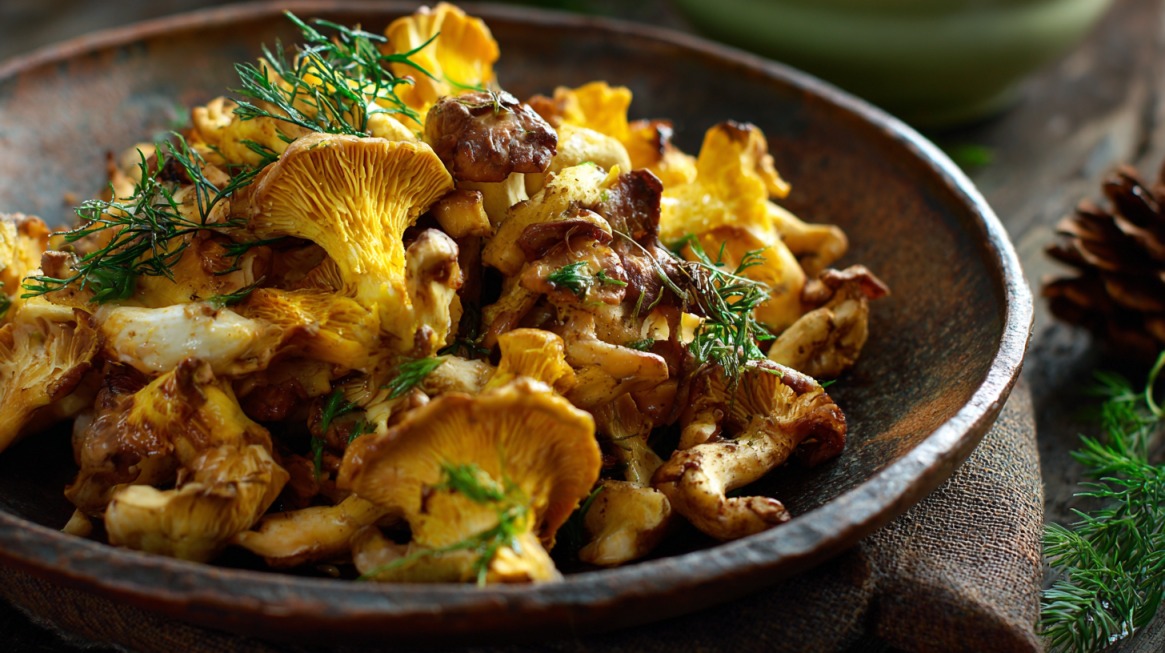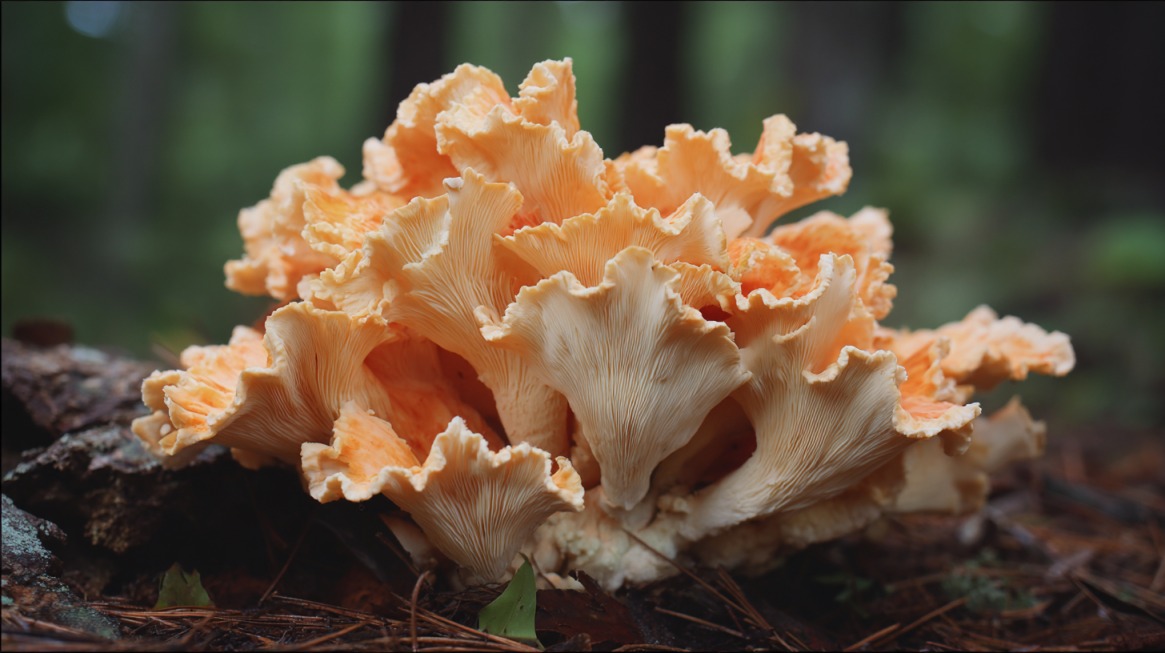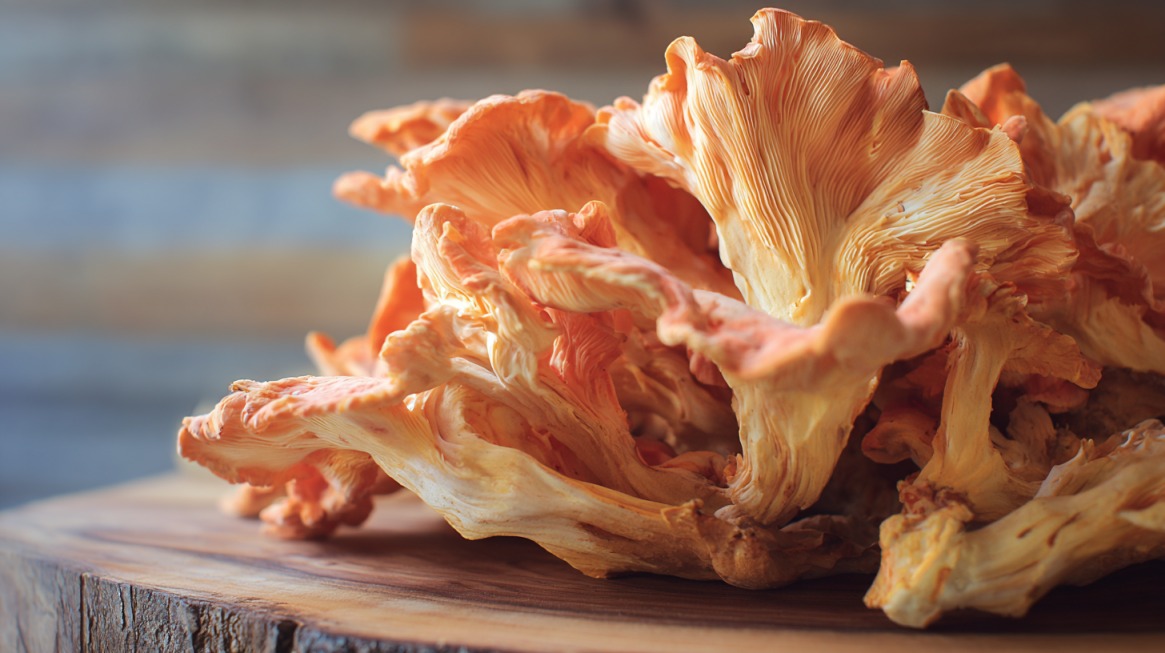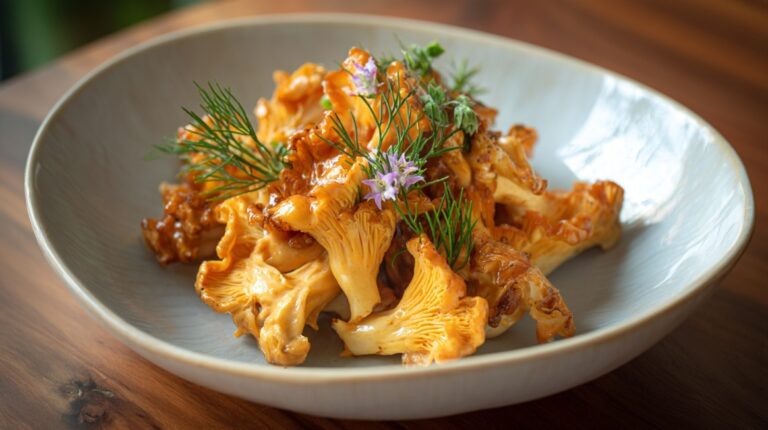Chicken of the woods, scientifically known as Laetiporus spp., has earned a reputation as one of the most accessible wild mushrooms for both new and seasoned foragers.
With its bold orange and yellow colors, it is almost impossible to miss in the woods during its growing season.
Vegetarians and vegans often favor it because the texture and flavor can closely resemble poultry when cooked correctly.
Many describe it as meaty, tender, and satisfying, offering a plant-based substitute that requires minimal seasoning to impress.
Step-by-Step Cooking Methods

- Age
- Moisture content
- Texture
Younger specimens with juicy flesh respond best to dry cooking, while older or drier ones require moisture at the beginning to soften before crisping.
Both techniques highlight the natural meat-like qualities of this fungus while allowing flexibility with seasoning and serving styles.
View this post on Instagram
Wet Sauté (For Older or Drier Mushrooms)
Older mushrooms can be fibrous or dry, making them ideal for a wet sauté method that starts with water before moving to oil.
It helps soften the texture and prevent chewiness.
- Slice mushrooms into half-inch to one-inch thick pieces for even cooking.
- Place pieces in a skillet with a small amount of water and simmer until the liquid evaporates.
- Once dry, add oil, garlic, shallots, and thyme to build flavor.
- Cook until mushrooms turn golden and tender, stirring occasionally for even browning.
- Serve hot as a side dish or add to pasta, risotto, or grain bowls.
The combination of aromatics with the softened mushroom delivers a savory, satisfying result that closely resembles chicken in both flavor and texture.
Dry Sauté (For Fresh or Juicy Mushrooms)
Freshly harvested chicken of the woods often contains enough internal moisture to release liquid on its own.
A dry sauté method draws out this liquid, concentrating the flavor and preventing the mushroom from steaming.
- Cut mushrooms into uniform slices to ensure consistency.
- Place directly into a hot, dry skillet and allow natural moisture to release and evaporate.
- Once nearly dry, add olive oil or butter to encourage browning.
- Season with salt, garlic, and herbs such as parsley, thyme, or rosemary.
- Finish with shallots, a squeeze of lemon, or chili flakes for extra brightness.
The result is a crisp golden exterior with a tender interior that showcases the mushroom’s natural taste.
Identification & Foraging Tips

Accurate identification of chicken of the woods is critical for safe foraging. Its striking appearance makes it easier to spot compared to many other wild mushrooms, but careful observation is still required to avoid dangerous mistakes.
A correct identification ensures not only safety but also the best culinary experience, as young, fresh specimens provide the most desirable flavor and texture.
One of the most distinctive qualities of chicken of the woods is its bold color scheme. Vibrant orange caps with bright yellow edges often catch the eye even at a distance.
The mushroom grows in shelf-like layers that stack upon each other, creating a cluster that can weigh several pounds.
Unlike gilled mushrooms, the underside is covered in tiny pores, which is another key identifying feature.
- Bright orange to orange-red upper surface with yellow edges.
- Pore surface underneath instead of gills, usually white to pale yellow.
- Overlapping, shelf-like growth in clusters that can spread across large portions of a tree.
- Soft, tender texture when young that becomes woody with age.
- Fruiting typically occurs during warm months, most commonly summer through early fall.
Preferred growing environments:
- Most frequently found on hardwoods such as oak, beech, or cherry.
- It can also appear on other deciduous trees, but oak is the most reliable host.
- Mushrooms growing on conifers or eucalyptus should be avoided because they may absorb harmful compounds.
Important Safety Precautions
@msshiandmrhe Chicken of the woods 🐥 Meat-like mushrooms. #veganrecipes #airfryer #chickenofthewoods #mushrooms #easyrecipe #cookingasmr ♬ 菊次郎的夏天 – 兮顾
Chicken of the woods can be a delicious addition to the kitchen, but safety must always come first.
Cooking is non-negotiable, as heat is necessary to neutralize compounds that may irritate. Foraging and preparing this mushroom requires care, because not all specimens are safe to eat.
Following strict safety measures ensures that meals are enjoyable and free of unnecessary risk.
First-time consumers should always approach with caution. Even though many people enjoy chicken of the woods without issue, others may experience digestive discomfort or mild neurological effects such as tingling or numbness.
Trying a small portion before committing to a full serving is the best way to test personal tolerance.
Safety guidelines to follow:
| Precaution | Safe Practice | Reason | Risk if Ignored |
|---|---|---|---|
| Cook thoroughly | At least 10 minutes of heat | Breaks down compounds | Nausea, stomach upset |
| Avoid raw consumption | Never eat uncooked | Raw mushrooms are unsafe | Discomfort, illness |
| Start with small portions | Test tolerance with a few bites | Some people have mild allergies | Allergic reaction, digestive upset |
| Watch for reactions | Monitor for GI issues, numbness, tingling | Symptoms may appear in hours | Ongoing discomfort, possible medical emergency |
| Avoid conifers or eucalyptus | Harvest only on hardwoods | Certain trees contain toxins | Absorption of harmful compounds |
| Discard odd specimens | Reject with bad odor, slime, or discoloration | Signs of decay or contamination | Food poisoning or illness |
How to Clean Chicken of the Woods
Before cooking, proper cleaning prepares the mushroom for better flavor and texture.
Because it often grows directly on wood, dirt, insects, and debris can accumulate in its folds.
- Separate shelves into smaller, manageable pieces.
- Use a soft brush to remove dirt and insects.
- If necessary, perform a quick rinse followed by immediate drying with a towel.
- Avoid soaking, which leads to waterlogging.
- Trim off any woody sections near the base and keep only tender portions.
Effective cleaning not only enhances taste but also prevents soggy results during cooking.
Preparing it properly at this stage makes a noticeable difference once heat and seasoning are applied.
Pro Flavor Enhancements

Chicken of the woods has a naturally savory flavor with a meaty texture that makes it a strong base for countless dishes.
While simple seasoning with salt, pepper, and butter can already create a satisfying meal, additional techniques and ingredients elevate its flavor profile, allowing it to adapt beautifully across global cuisines.
- Deglaze the pan with dry white wine for depth.
- Add lemon juice and fresh parsley for brightness.
- Use cumin, chili flakes, or tomato paste for a richer flavor profile.
- Create a fajita-style dish by sautéing with onions, bell peppers, and a touch of lime.
- Classic pairing that turns the mushroom into a side dish worthy of a steakhouse table.
- Introduces an umami-packed, slightly nutty profile perfect for stir-fries.
- A rich, velvety sauce that clings to the mushroom, excellent for pasta.
- Infuses a smoky, slightly spicy edge that mimics grilled chicken.
- A fragrant, creamy base that works in both Indian and Thai-inspired curries.
Experimenting with these variations allows chicken of the woods to take on multiple identities in the kitchen. A single harvest can be turned into rustic comfort food, bold street-style dishes, or elegant meals with layered sauces.
With thoughtful seasoning, the mushroom easily adapts to the cook’s imagination while maintaining its satisfying, meaty bite.
Summary
Chicken of the woods is more than just a striking mushroom; it is a rewarding ingredient that, when treated correctly, delivers incredible flavor and texture.
Cleaning, cooking, and seasoning with care transforms it into a hearty dish that even meat eaters can enjoy.
Safe foraging and thoughtful preparation allow creativity in the kitchen, encouraging cooks to experiment with classic techniques and bold flavors.
With practice, every meal prepared with this mushroom can be both nourishing and memorable.

